Customizing your Custom Properties list
Commonly with my blog posts, the idea begins in Technical Support. Last week I was talking with a user about the Custom Property Tab builder. Specifically, what controls the list of available properties?
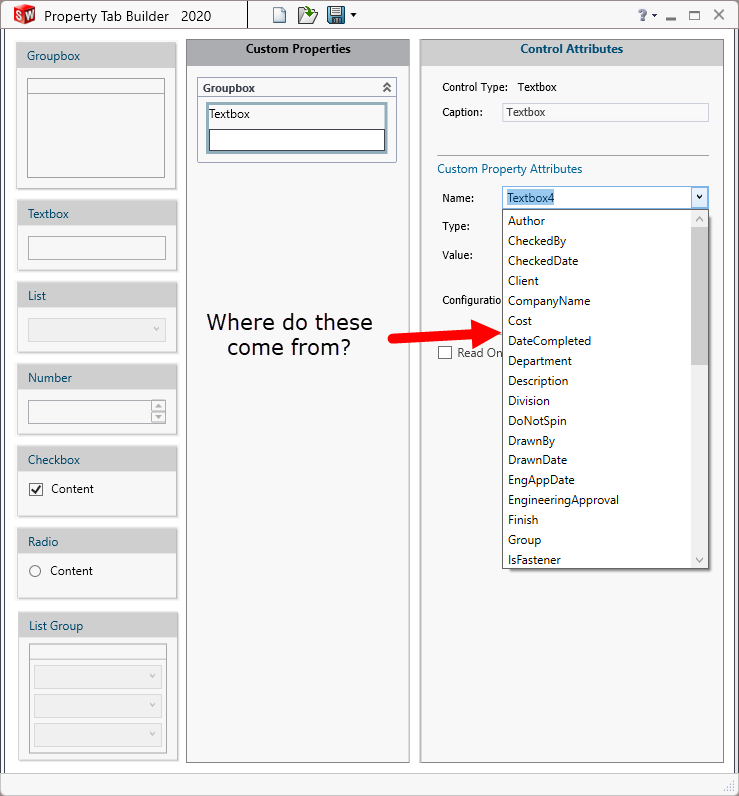
I’m not going into the details of the Custom Property Tab builder in this post. If you’re interested in learning more, look at this CATI blog post by Dennis Barnes: SOLIDWORKS Property Tab Builder. He’ll walk you through the steps of creating your own Custom Property Tabs and how to use them.
The Custom Property Tab builder is not the only place one finds this list of properties. In my experience, it’s more common to come across it when accessing the File Properties of any SOLIDWORKS document. As seen below with a new part.
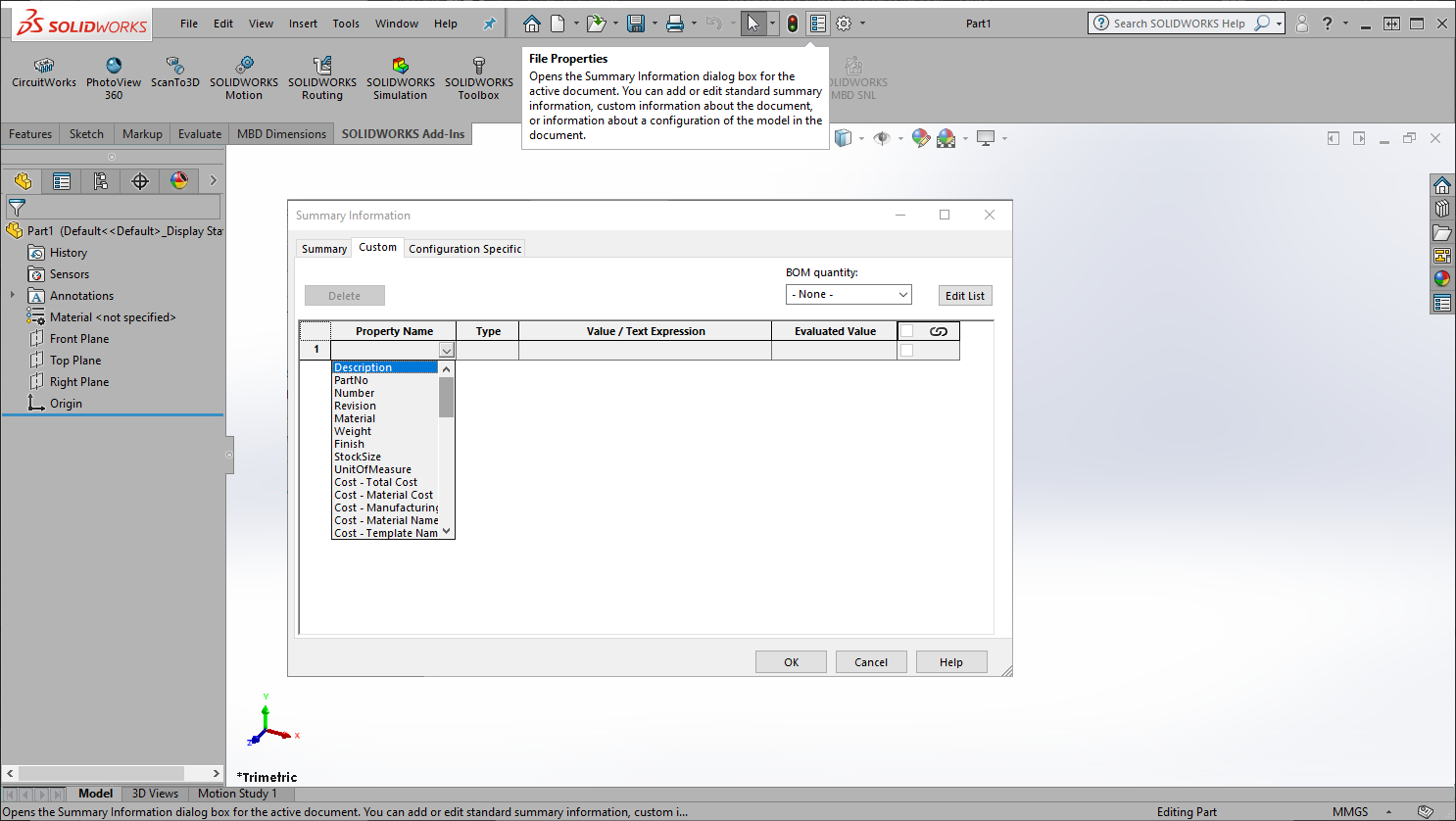
It’s common to require a property name that does not exist in the default list. Here I’ve added the highly specific name of “My Property 1” for the Property Name. Selecting OK will add the property to the file and make it accessible in many different areas of SOLIDWORKS.

This is great for an “on the fly” property addition but does not add it to the default list of properties. To add any property to the default list, the Custom Property window includes an easy to overlook button called “Edit List.”

Adding properties though the Edit Custom Property List interface may not be the most elegant or intuitive, but it gets the job done. Typing in any property name and selecting Add will do just that, add the property to the list.
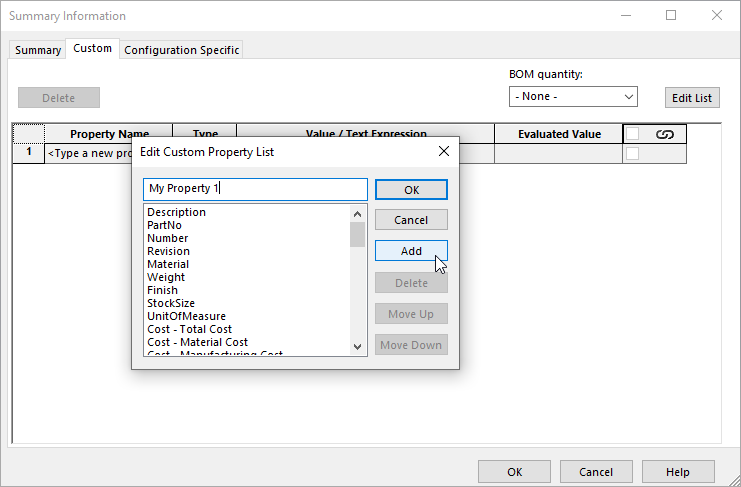
Selecting any existing property name will activate the Delete, Move Up or Move Down buttons. It can be many mouse clicks of “Delete” to remove unwanted properties as well as many “Move Up or Move Down” clicks to change the order to your liking. When it’s all said and done, one can use this interface to customize the Custom Property List.
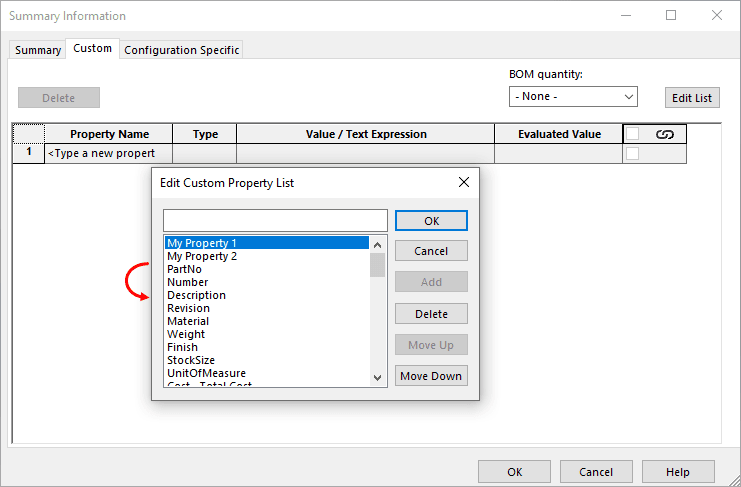
Like many functions in SOLIDWORKS, there’s more that one way to do something. Behind the scenes, this list is controlled by a very simple text file named: properties.txt. The location of the file is found by using the SOLIDWORKS System Options, File Locations and Custom Property Files.
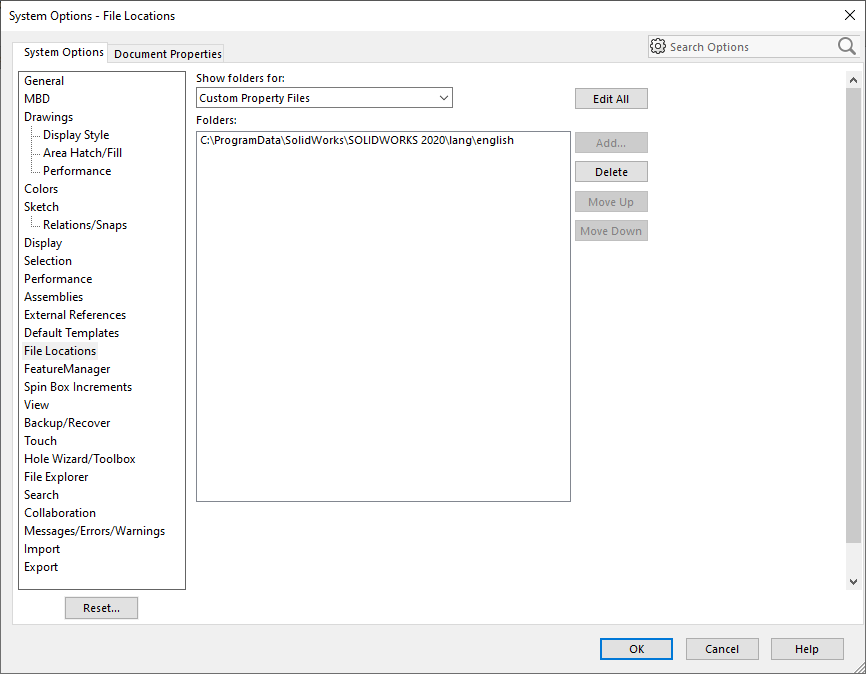
By default, it’s located in:
C:ProgramDataSOLIDWORKSSOLIDWORKS 20XXlangenglish.
Where “SOLIDWORKS 20XX” represents the release number for your installation.
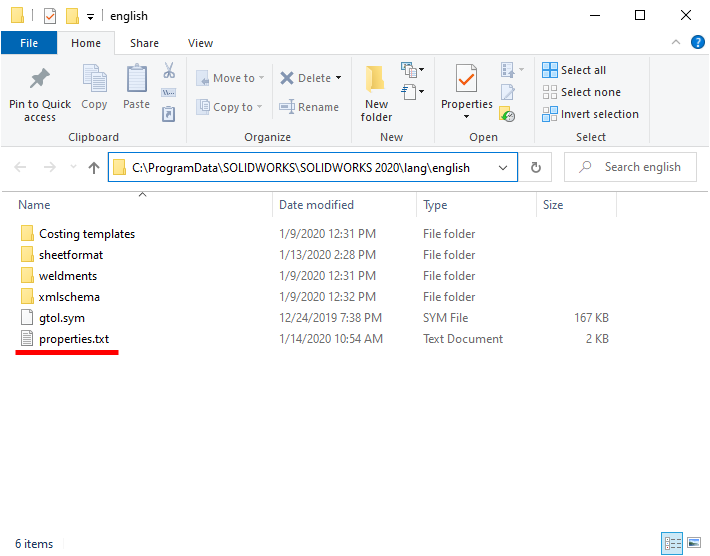
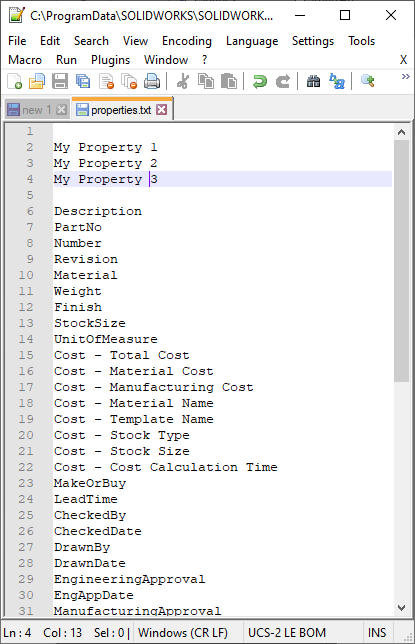 Editing the properties.txt file couldn’t be easier, simply browse to the folder and open it in your preferred text editing application. Like any type of modification, it’s a good idea to back the file up before making any changes.
Editing the properties.txt file couldn’t be easier, simply browse to the folder and open it in your preferred text editing application. Like any type of modification, it’s a good idea to back the file up before making any changes.
Here, I’ve added a few of my own properties and the top of the list. Because it’s a plain text file all the easy to use editing tools are available, no awkward UI window required.
When finished editing make sure the file is named properties.txt and SOLIDWORKS will start using it. You can email the customized file to any other SOLIDWORKS user so it’s easy to share a common property list. Better yet, place the file in a network folder and have all SOLIDWORKS users change their File Locations to this folder.
A few comments about the default file location. By default, Windows 10 hides the ProgramData folder. You’ll need to enable visibility of “Hidden Items” on the View tab in the File Explorer.

Additionally, if you have (or have had) multiple versions of SOLIDWORKS installed you’ll see many version specific folders within C:ProgramDataSOLIDWORKS and each one will have its own set of sub-folders and ultimately a unique properties.txt file. Keep an eye on these folders and the File Locations within SOLIDWORKS. It’s not uncommon to have a SOLIDWORKS file location referencing one of these version specific folders that’s been removed.
So, there you have it. The list of custom property name is controlled by a very simple and easy to edit text file. No longer do you need to look at a list of properties that don’t apply to your needs.
Kris Dubuque
Field Technical Services Manager
Computer Aided Technology, LLC

 Blog
Blog